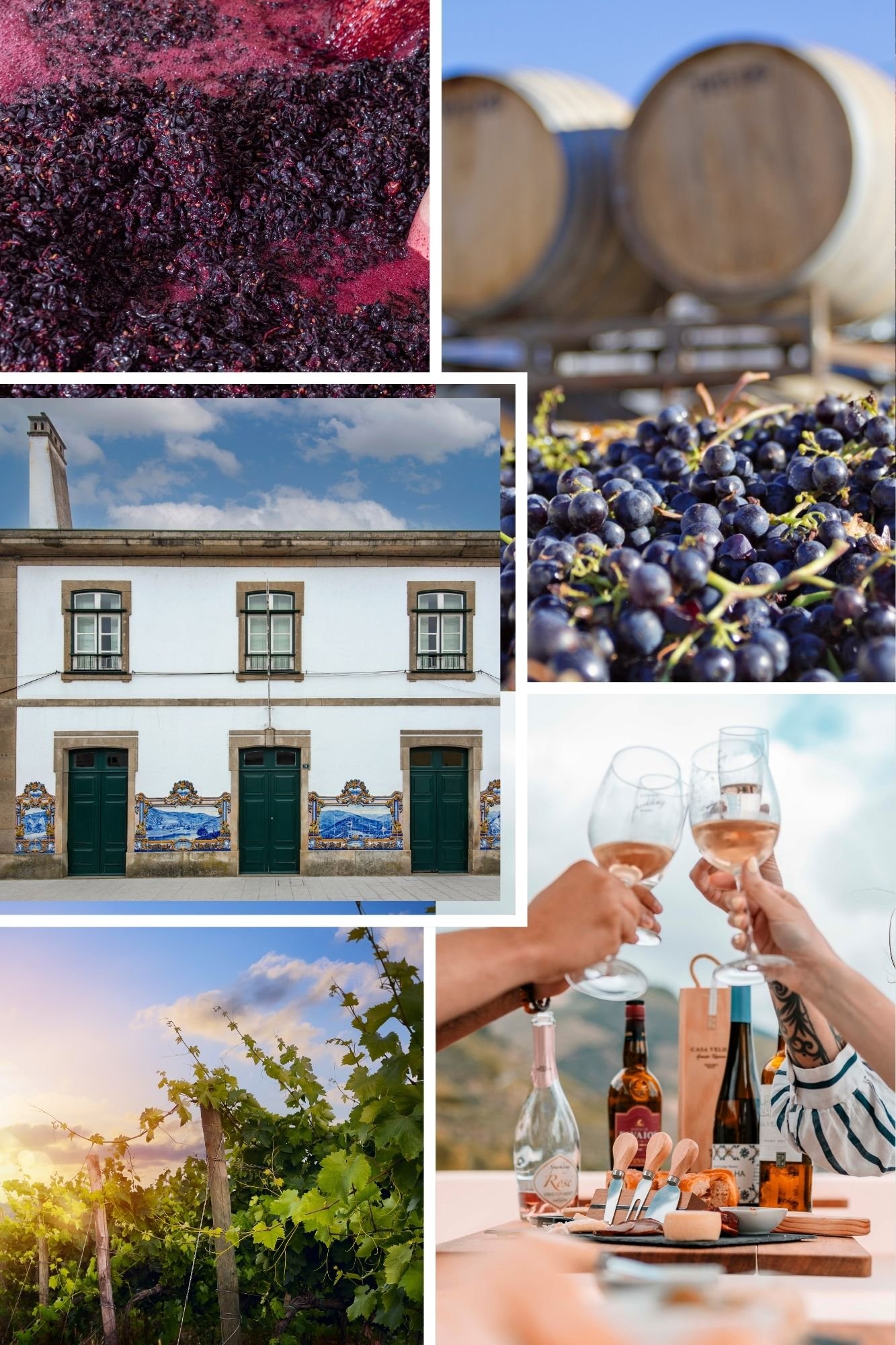
The Vintage Period in Douro Valley: Wine, Tradition, and Cultural Celebrations
Leave your thoughts

The Douro Valley, renowned for its breathtaking landscapes and rich wine history, comes alive each year during the vintage period, which typically takes place from mid-September to October. This is when grapes are harvested, and the valley is abuzz with activity, blending centuries-old traditions with modern wine production techniques. Alongside the harvest, the valley offers visitors a deep dive into Portuguese culture, festivals, and sustainable tourism. In this guide, we’ll explore the historical significance of the vintage period, the must-visit spots like Pinhão and Favaios, as well as cultural festivals such as the Lagarada Tradicional in Celeirós, and the eco-friendly tours of Bateaux solaires Daurum.
The Vintage Period: A Rich Tradition of Wine Harvesting
The vintage period is more than just a harvest—it’s a time of celebration in the Douro Valley. Dating back over 2,000 years, the region has been producing some of the world’s finest wines, particularly Port. During this time, grapes are handpicked from the valley’s iconic terraced vineyards, following traditional methods. In some quintas (wine estates), such as Quinta da Foz and Quinta do Seixo, grapes are still trodden by foot in lagares (stone tanks), a practice that dates back centuries and helps produce wines of the highest quality.
Quinta da Foz, located near Pinhão, is especially renowned for maintaining this tradition. The estate offers tours where visitors can witness the treading of grapes and enjoy tastings of their exceptional Ports and table wines. Similarly, Quinta do Seixo provides a blend of tradition and modernity, with a focus on both the heritage of winemaking and innovative techniques.
What to Visit in Pinhão: Wine and Scenic Beauty
Pinhão, nestled on the banks of the Douro River, is often considered the heart of Douro’s wine culture. A few must-see spots include:
- Pinhão Train Station
Known for its beautiful azulejos (blue and white tiles), the Pinhão train station showcases the history of the region’s wine industry. The tiles depict scenes from the vintage period, illustrating the manual grape harvesting and the rich traditions of the valley. - Quinta do Seixo
Offering stunning views over the Douro River, this quinta is one of the most iconic in the region. Visitors can tour the cellars, learn about wine production, and sample their range of Ports, while enjoying a panoramic view of the terraced vineyards. - Quinta da Foz
Just outside Pinhão, this quinta is famed for its dedication to traditional methods, including the use of lagares for grape treading. The estate offers insightful tours that highlight the importance of preserving the region’s winemaking heritage.
Favaios: A Wine Village and the Legacy of Moscatel
A short drive from Pinhão is the village of Favaios, which is famous for its production of Moscatel wine. Unlike Port, Moscatel is a sweet, fortified wine made from Muscat grapes and is a staple of the region’s wine culture.
The Adega de Favaios cooperative, founded in 1952, is the heart of this village’s wine production. Visitors can tour the facility, learn about the process of making Moscatel, and enjoy tastings of different varieties. Beyond wine, Favaios is also known for its traditional bread-making. Local bakeries continue to use ancient techniques, baking bread in wood-fired ovens, which pairs perfectly with a glass of Moscatel.
Celeirós Festival: The Lagarada Tradicional
Every September, the village of Celeirós do Douro, in the municipality of Sabrosa, hosts the Lagarada Tradicional. This festival celebrates the pisa das uvas—the traditional treading of grapes in granite lagares. The event, which takes place over two days, includes not only the wine-making tradition but also a vibrant cultural program featuring live music, local food, and products from the Douro region(Cim Douro)(Descla).
After a brief hiatus, the Lagarada Tradicional has returned, offering visitors an authentic experience of Douro’s winemaking traditions, with grape treading as the centerpiece of the festival. It’s an opportunity to immerse yourself in the local culture and taste the best of what Douro has to offer.
Daurum Solar Boats: A Sustainable Way to Explore the Douro
For those looking for a peaceful and eco-friendly way to explore the Douro River, Bateaux solaires Daurum offers both private and shared tours. Starting at just €15 per person, these solar-powered boats glide silently along the river, offering stunning views of the terraced vineyards and charming villages.
Shared and Private Tours
Daurum Solar Boats caters to a variety of travelers. The shared tours provide an affordable option for solo travelers or smaller groups, while the private tours offer exclusivity for couples, families, or groups. Onboard, you can enjoy wine tastings and local snacks as you sail through one of the world’s most beautiful wine regions.
Sustainability
The solar-powered boats are a sustainable alternative to traditional motorboats, producing zero emissions and ensuring a tranquil experience. The silence of the boats enhances the natural beauty of the surroundings, making the tour even more immersive.
Whether you’re looking for a romantic outing or a relaxing way to explore the Douro’s hidden gems, Daurum Solar Boats provides a memorable experience with a focus on sustainability.
Conclusion
The vintage period in Douro Valley offers an unparalleled experience of Portuguese wine culture, steeped in tradition and full of vibrant celebrations. From the charming villages of Pinhão and Favaios, to the rich history of Adega de Favaios and the festive Lagarada Tradicional in Celeirós, the region is alive with activity. For those seeking an eco-friendly way to explore the valley, Bateaux solaires Daurum provides a unique and sustainable option, allowing you to experience the beauty of the Douro River in a peaceful and responsible way.
